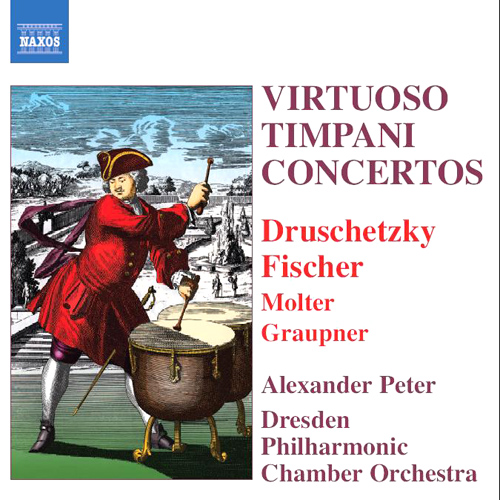VIRTUOSO TIMPANI CONCERTOS

Francesco Nicolosi studied with Vincenzo Vitale, winning prizes at both the International Santander Piano Competition and the Concours International d’Exécution Musicale in 1980.
He has toured internationally, having performed in many prestigious concert halls including Queen Elizabeth Hall and Wigmore Hall in London, Teatro dell’Opera and Accademia Nazionale di Santa Cecilia in Rome and The Kennedy Center in Washington, and is a regular guest at the Rossini Opera Festival and Ravenna Festival, among many others.
His critically acclaimed recordings, many of which feature the works of Thalberg, have been released by Nuova Era, Naxos and Marco Polo, and in 1994 he was the recipient of the Bellini D’Oro.
As president of the Sigismund Thalberg International Study Centre, he has intensely researched the music of the legendary Austrian composer-pianist, and is the foremost interpreter of his works. Nicolosi is also the artistic director of the Sigismund Thalberg International Piano Competition, a post he has also held with Jeux d’Art Festival Internazionale Villa d’Este, Roccaraso in Musica and Concerti d’Estate di Villa Guariglia. From January 2015 to December 2019 he was the artistic director of the Teatro Massimo Bellini in Catania.
For more information, visit https://en.francesconicolosi.com.
The conductor and violinist Gennaro Cappabianca graduated under the guidance of Carlo Giuntoli, continuing his violin studies further with Farulli, Prencipe, Zanettovich and Faia. From 1985 to 1988 he played first violin in the Fiesole Youth Orchestra, performing with other well-known orchestras, before taking up a permanent position with the Teatro San Carlo in Naples. He made his début as a conductor in 1995 with the Solisti di San Carlo, going on to collaborate with distinguished soloists in the concert hall and recording studio. He made his début as a conductor of opera with the Laboratorio Lirico di Orvieto in Cavalleria rusticana, continuing with further engagements in various theatres throughout Italy. His wide repertoire as a conductor extends to the contemporary.
Among the most important composers of Italian opera in the later 18th century, Paisiello was trained principally in Naples, where he first established his reputation as a composer. In 1776 he was invited to move to St Petersburg, where he worked as a composer of opera and director of the court orchestra, winning the favour of the Empress Catherine II. In 1784 he was able to accept an invitation to return to Naples, where he enjoyed royal favour, only temporarily withdrawn after his acquiescence in the republican regime of 1799. He spent two years in Paris, from 1802 to 1804, as director of music for Napoleon. His employment in Naples continued under Ferdinand IV and then under the usurper Joseph Bonaparte and his successor Joachim Murat. The final defeat of Napoleon in 1815 and the return of King Ferdinand removed Paisiello from his official positions.
Operas
Paisiello’s chief fame was as a composer of operas, of which he wrote around 80. L’idolo cinese (‘The Chinese Idol’) was a favourite of Lady Hamilton, later the mistress of Nelson. His Il barbiere di Siviglia (‘The Barber of Seville’), first performed in St Petersburg in 1782, proved a dangerous rival to Rossini’s later opera on the same subject. He set a number of libretti by the Vienna court poet Metastasio and turned to Cervantes in his Don Chisciotte della Mancia (‘Don Quixote de la Mancha’). His style seems to have had some influence on Mozart, who heard his Il re Teodoro in Venezia (‘King Teodoro in Venice’) in Vienna in 1784; it is concise and melodious, with the necessary sparkle in his comedies, although his heroic and tragic operas seem sometimes to be matched with music that is too light-hearted.
Vocal and Choral Music
Paisiello composed a number of cantatas, designed for entertainment or in formal celebration of some royal occasion. Sacred works include oratorios on the subject of Susanna and of The Conception of the Virgin Mary, with a setting of Metastasio’s La passione di Gesù Cristo (‘The Passion of Jesus Christ’). He made a number of settings of the Mass, including, in 1814, a Mass for the chapel of Louis XVIII, which followed earlier Masses for Napoleon. There are other liturgical compositions, some again designed for official occasions of celebration.
Instrumental Music
Paisiello’s instrumental music includes divertimenti, keyboard concertos, string and flute quartets, and sonatas for harpsichord and violin.































